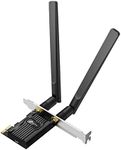Best Wireless Network Cards
From leading brands and best sellers available on the web.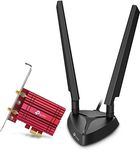
TP-Link
TP-Link WiFi 6E Intel AX210 AXE5400 PCIe WiFi Card for PC (Archer TXE75E) - Tri Band Wireless Adapter for Desktop PC with Magnetic Base Dual Antenna, Bluetooth 5.3(USB Port), WPA3, MU-MIMO, OFDMA
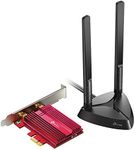
TP-Link
25%OFF
TP-Link WiFi 6 AX3000 PCIe WiFi Card (Archer TX3000E), Up to 2400Mbps, Bluetooth 5.2, 802.11AX Dual Band Wireless Adapter with MU-MIMO,OFDMA,Ultra-Low Latency, Supports Windows 11, 10 (64bit) only
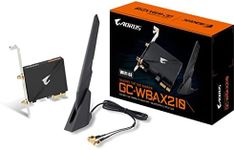
GIGABYTE
15%OFF
GIGABYTE WiFi 6E GC-WBAX210 (2x2 802.11ax/ Tri-Band WiFi/Bluetooth 5.2/ PCIe Expansion Card)
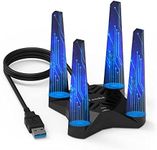
WAVLINK
33%OFF
USB WiFi Adapter for Desktop PC, AC1900 WiFi Adapter Dual Band Wireless Network Adapter with 2.4GHz/5GHz High Gain Antennas, MU-MIMO, Supports Windows 11/10/8.1/8/7, XP, Mac OS 10.7-10.15
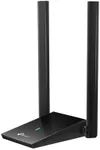
TP-Link
30%OFF
TP-Link WiFi 6 USB Adapter for Desktop PC - (Archer TX20U Plus) AX1800 Wireless Network Adapter with 2.4GHz, 5GHz, High Gain Dual Band 5dBi Antenna, WPA3, Supports Windows 11/10
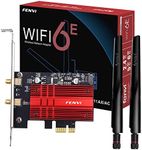
F FENVI
AX210 PCI-E WiFi Card BT5.2 160MHz Tri-Band Expands WiFi into 6GHz/5GHz/2.4GHz 5400Mbps Gigabit AX210ngw Desktop PC PCIe Wireless Network Adapter WiFi 6E 802.11ac ax MU-MIMO for Windows 11/10

GIGABYTE
13%OFF
GIGABYTE WIFI 6 GC-WBAX200 (2x2 802.11Ax/ Dual Band WiFi/ Bluetooth 5/ PCIe Expansion Card)

TP-Link
21%OFF
TP-Link AC1200 PCIe WiFi Card for PC (Archer T5E) - Bluetooth 4.2, Dual Band Wireless Network Card (2.4Ghz and 5Ghz) for Gaming, Streaming, Supports Windows 11/10, 8.1, 8, 7 (32/64-bit)

TP-Link
33%OFF
TP-Link WiFi 6 PCIe WiFi Card for Desktop PC AX3000 (Archer TX55E), Bluetooth 5.2, WPA3, 802.11ax Dual Band Wireless Adapter with MU-MIMO, Ultra-Low Latency, Supports Windows 11, 10 (64bit) Only
Our technology thoroughly searches through the online shopping world, reviewing hundreds of sites. We then process and analyze this information, updating in real-time to bring you the latest top-rated products. This way, you always get the best and most current options available.

Most Popular Categories Right Now
 Yehudah Posnick
Yehudah PosnickBuying Guide for the Best Wireless Network Cards
If you bought a laptop or desktop computer, maybe you want to install hardware that will allow faster download times. (Or maybe your desktop PC doesn't have any wireless network card.) You can always hook up to the Internet with an Ethernet cable directly to your router. But it could be that your computer is too far away from the modem, and an Ethernet cable is not a good option. If so, installing a wireless network card is a convenient solution. You'll find that there are a variety of options out there, depending on your computer's hardware, as well as your needs and expectations. Here is a guide to some of the best wireless network cards on the market.
Types
There are two major ways of enabling your computer to be able to hook up to a wireless modem:
-
PCI cards: This is a physical card that you insert into a slot of your PC. There are (at least) three varieties:
-
Mini PCIe: Laptops usually will have a built-in antenna for wireless Internet. If you want something with greater range, you may want a Mini PCIe card. This is a type of card that fits into a slot on the side of some laptops. (Check if you laptop can accept such a card.)
-
PCI: This is inserted into the long white slot on your desktop PC. This has a 32 bit wide bus, with a bandwidth of 133 MB/s (Bandwidth is the amount of information that can pass through the interface per second). A number of antennas (1, 2, or 3) will protrude from the back of the PC.
-
PCI Express (PCIe): This will fit a short yellow slot on your motherboard. They offer a range of bandwidths: PCI Express x 1 offers a bandwidth of 250 MB/s. That will fit in a short yellow slot. The PCI Express x 16 offers a bandwidth of 8 GB/s. That will fit a long yellow slot.
-
USB adapter: There are several USB type connections available nowadays: USB 2.0 (a gray USB port) and USB 3.0 (a blue USB port). USB 3.0 offers faster speeds. This has less power than a PCI network card, but it's a lot more convenient to install.
What Reviewers Have to Say
Based on all the consumers' reviews we've scanned, these are the top things they mentioned about their new stuff:
-
Installing a PCI card: If you can find an empty PCI slot in your desktop computer, you can slide in a PCI wireless network card. But to get the thing to work, you'll have to get the drivers (i.e., the computer software) for your particular operating system. The network card will probably come with an installation disk, containing those drivers. You'll also have to disable any existing network interface device that you have already (maybe it's hardwired into the motherboard).
-
Installing a USB adapter: This is very easy to insert--you just put it into any vacant USB port. But the installation might be tricky--some USB adapters are not compativle with Linux, only with Windows or for a Mac. So make sure it's good for your operating system before making a purchase.
Important Features
An example of a standard PCI network card will have the following specifications: “300 Mbps 2T2R 300M 801.11b/g/n Dual Band Wireless Wifi Card Adapter”. What do all these numbers mean?
-
Speed: The network card's data transfer rate will be listed in Mbps (=Megabits per second), or even in Gbps (=Gigabits per second). So here, this adapter operates at 300 Mbps.
-
Number of antennas: You'll also see 1T1R, 2T2R, or 3T3R. This indicates the number of antennas in the network card doing transmitting (T) and receiving (R). The number of antennas is only one indication of the network card's performance.
-
Signal to noise ratio: A better indication of the card's performance is a high signal-to-noise ratio (SNR)--you want a strong signal, and not so much noise. That means a better quality signal. The ratio will be in dB (decibels), or dBi (decibels isotropic—measured in all directions).
-
Frequency: The “300 M” is short for 300 MHz—that is the frequency (cycles per second) at which the network card operates. You will see network cards that are Dual Band: This means that the device will transmit in one of two different standard frequency ranges, for example, both 2.4 GHz and 5 GHz.
-
Network Connectivity: There are a number of wireless local area network (WLAN) channels that are allowed for wireless Internet connectivity. They are known as the 802.11 standard—which started in 1999, and is constantly being upgraded for greater encryption and security. They are distinguished by the suffix (letters a-n). For optimal performance, you want your network card to have the same standard as the wireless modem/router to which you want to connect. Otherwise, your Internet experience will be slowed down. Here is a summary of the major service types:
-
802.11a: This works at 5.725-5.850 GHz frequencies, and up to 54 Mbps (Megabits per second) speed. The range will be up to 50 feet.
-
802.11b: This works at 2.400-2.4835 GHz frequencies, and at 11 Mbps speed. The range will be up to 150 feet.
-
802.11g: This extends the data rate of WLAN devices. It runs to a distance of 50 feet, has a speed of 54 Mbps, and a frequency of 2.4 GHz.
-
802.11n: This standard works at a range of 175 feet, at speeds of 300-450 Mbps, and a frequency of 2.4 -5 GHz.
-
802.11ac: This standard works at a 5 GHz band, and a speed of up to 1 Gbps.
So, in this case, a network card that says “802.11b/g/n” will work with a modem/router that has the service type 802.11b, or 802.11g, or 802.11n.
Top-Rated Brands
Panda Wireless—is located in Los Gatos, California. They make a series of USB wireless network adapters. They have adapters that work with or without an antenna, or use Bluetooth technology.
TP-Link — was established in 1996 by Zhao Jianjun and Ziao Jiaxing, and have their main headquarters in Shenzhen, China. They make wired and wireless routers, range extenders, IP cameras, WiFi adapters, switches, and power banks.
Asus—or ASUSTeK Computer, Inc., is a computer hardware and electronics manufacturer. They were founded in 1987, and are located in Taipei, Taiwan. They make a wide range of computer products, for desktop, laptop, and netbook computers, as well as peripheral computer products.
Intel—was founded in 1968 by Gordon Moore and Robert Noyce. They have their headquarters in Santa Clara, California. They are one of the world's largest computer chip manufacturers, making computer processors, motherboards, network interface controllers, and more.


